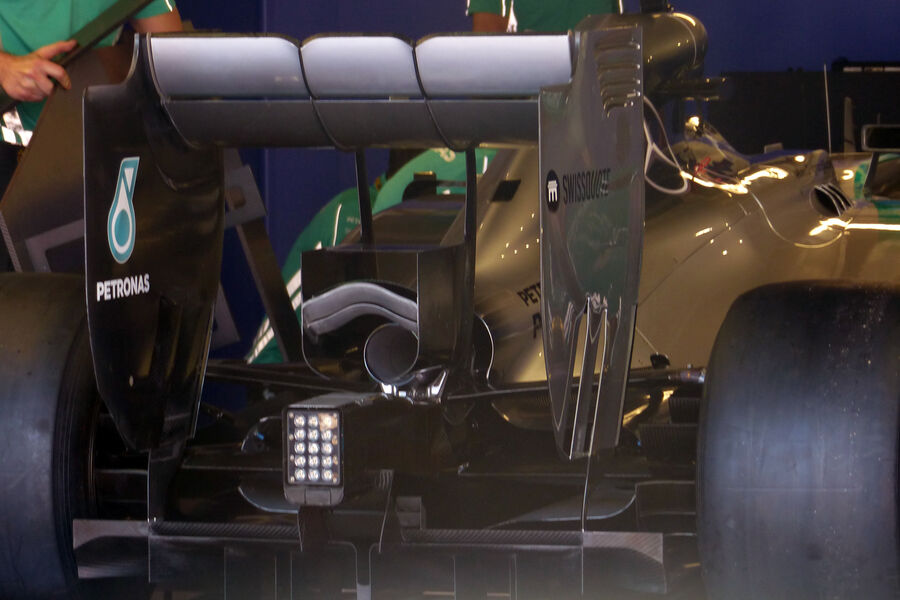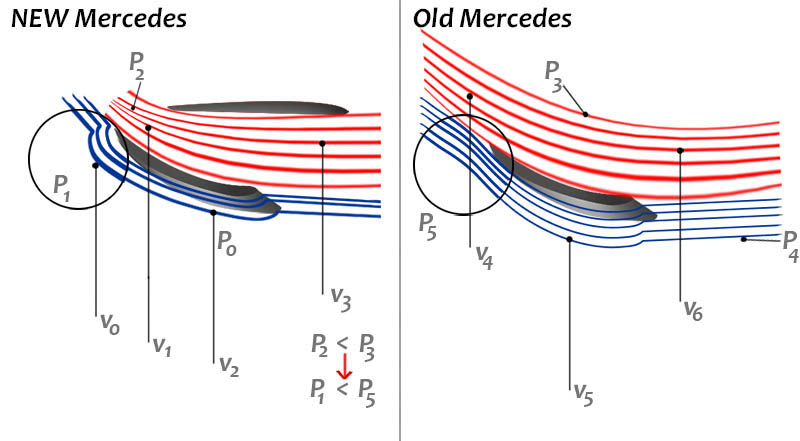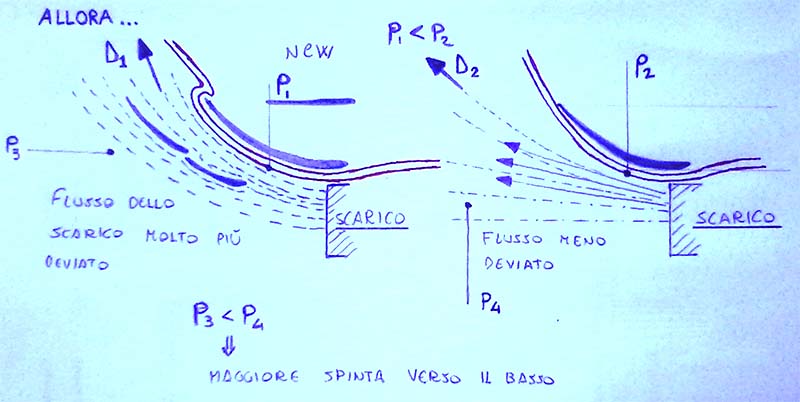The very long 8th gear chosen by Mercedes, so that they have almost exclusively ran using 7th, might actually have been compromising the W05
hybrid so far. It is good for 480Km/h at 15000rpm or, more realistically, 360Km/h at 11250rpm, but it is compromising the transition to the other gears. Where would they be with shorter or more closely spaced gears ?

In the graph below the diagonal lines extend to 13000rpm. I've laid down vertical markers at 10500 and 12500rpm, which I arbitrarily choose as the range one would like to be in, and horizontal markers at 10500 after the upshift. When upshifting from 4th to 5th or from 5th to 6th, they have to get well out of that range (other teams not, or just barely).
The crossover points I calculate for being at 10500 after the shift are:
Shift up to: 2nd 3rd 4th 5th 6th 7th 8th
Shift rpm: 12405 12617 12763 13133 12956 12469 11601
Either they are going all the way to 13000rpm all the time (might well be that the power unit is that good, after all Force India made a similar choice), or they are shifting to 10200rpm or something like that, reducing the fuel allocation by a tiny margin for a fraction of time (my theory is that this is a feature, not a bug, in a car in the high side of fuel usage). It is difficult to tell from the telemetry overlays as there is some sort of time averaging going on, meaning that we do not get to see the real rpm just before and after the shift.
They could have left 4th and 8th where they are but chosen more closely spaced 5th, 6th and 7th. Somehow they chose not to. Why? Is there any reason to almost completely avoid using 8th gear? Any significant advantage to doing less shifts?








